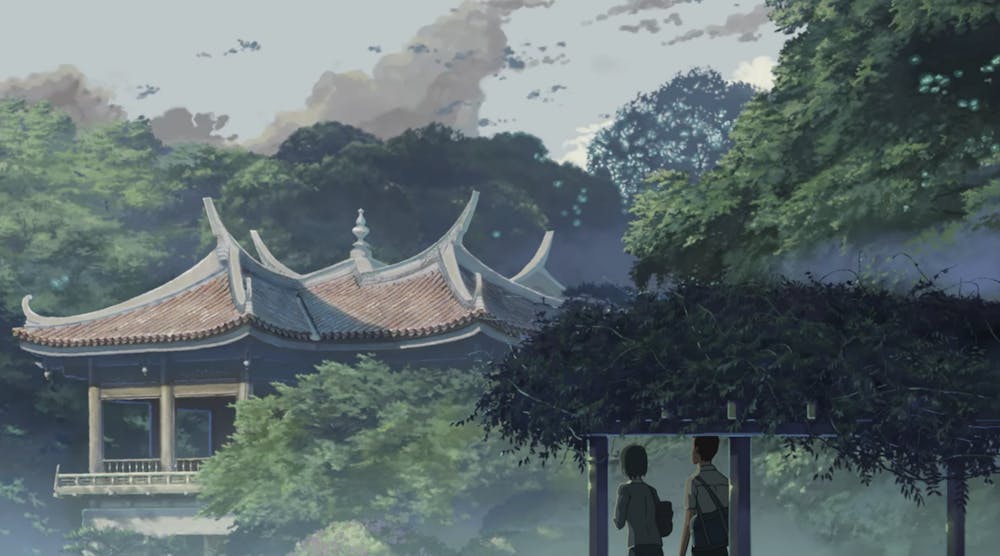Editor's Note: This article contains spoilers for 'The Garden of Words.'
Fall is upon us, and we all know what that means: pumpkin spice lattes, color–changing leaves and Instagram posts of pumpkin spice lattes and color–changing leaves. What it means for college students, however, is midterms, stress, and all–nighters. It wouldn't be uncommon to find a student sinking into melancholic reflection and lamenting their existence around this time of the year. If you’re looking to romanticize your life amid the chaos of college, here is an anime movie that epitomizes the adage "less is more" and illustrates all the main character moments you could adopt in your own life.
Makoto Shinkai’s 2013 anime–drama–romance The Garden of Words is set in a Japanese garden in Shinjuku. It depicts a blossoming relationship between a high school student and a teacher from the same school, which was the first of many taboos explored in the movie. Takao, a 15–year–old aspiring shoemaker, skips school on rainy mornings and goes to an idyllic garden to sketch and design shoes, where he meets a 27–year–old woman with a peculiar taste for chocolate and beer pairings.
We later learn that she experiences work–related anxiety, after having been ostracized by the school community. She goes to the azumaya, the term used to denote summer pavilions in archetypal Japanese gardens, to escape the noise and pressures of society. Her and Takao's first meeting is characterized by an inexplicable, immediate sense of connection and they continue to rendezvous on rainy days.
The male protagonist lives a life devoid of parental figures and derives comfort from spending time in a space where nonconformity is embraced, from day drinking to skipping obligations to sharing secrets with complete strangers. The azumaya becomes a literal and metaphorical haven for the two, protecting them from an intense thunderstorm as well as the judgement of society. But the symbolism of shoes is not lost: Through these candid interactions, they are able to find the will and courage to “walk” again, to make progress in life, to no longer be stationary and passive.
The plot culminates in a heartfelt confession, but the heavy weight of taboos obstructs the "happily ever after" that the audience inevitably hopes for. Nevertheless, both fictional characters and viewers walk away feeling restored and with a fresh perspective on vulnerability. In an environment dominated by "Penn Face"—the act of adopting and maintaining a pretense of perfection—the film's central message of embracing vulnerability rings louder than ever.
Featuring an omurice dish that is bound to stir midnight cravings, droplets of rain that take on a life of their own, and dazzling skylines—which are the necessary staple of anime—the film explores the opposing forces of distance and intimacy, nature and society, and solitude and solidarity through an aesthetic lens. Its reliance on visual metaphors and cues is very characteristic of Shinkai, who excels at portraying how objects capture light.
The minimal use of dialogue forces the audience to pay close attention to minuscule changes in facial expressions and gestures. The elegant piano music that underscores most of the scenes complements the seamless transitions from the public sphere (school) to the private sphere (their homes and the azumaya). Paired with the harmonious pitter patter of rain and classic anime food preparation scenes, these elements combine to produce a calming effect on the viewer. They immerse the viewer in a state of serenity and provide the perfect escape from reality on a Friday night—or any weekday, for that matter, as the film is only 46 minutes.
The pressure to thrive in a pandemic has unequivocally exacerbated feelings of negativity and anxiety among Penn students, but The Garden of Words is an excellent reminder that as long as you're willing to share, there is someone out there willing to listen. The story is uncomplicated, yet poignant, and the bittersweet ending will only leave you wanting more.







